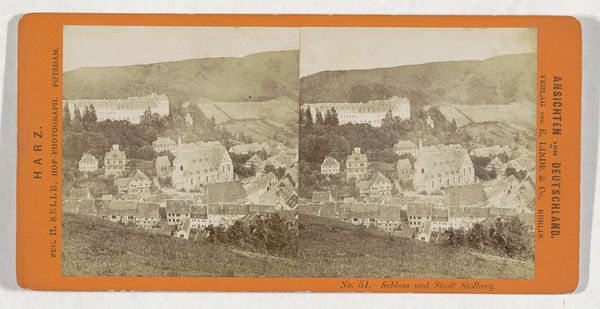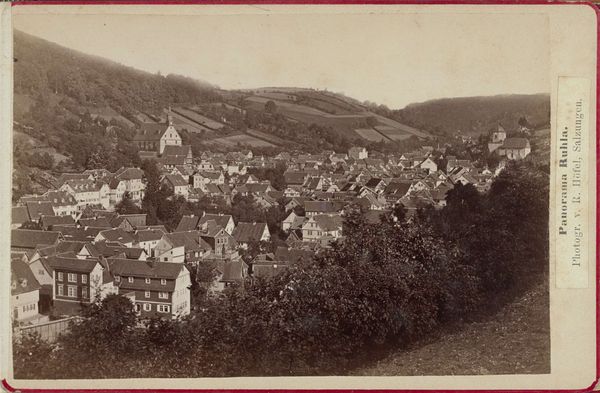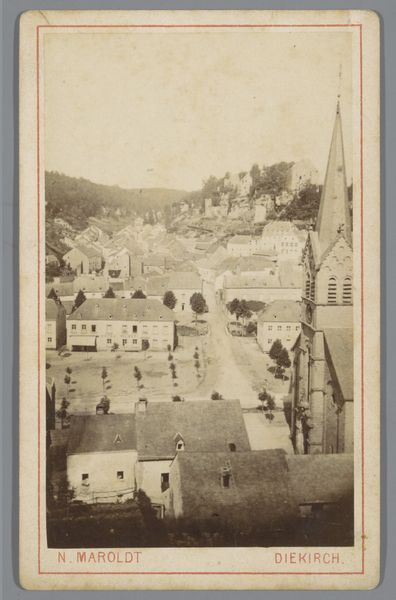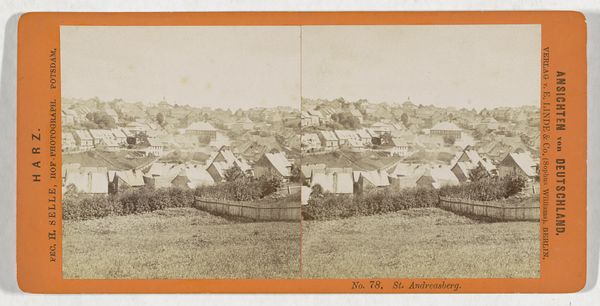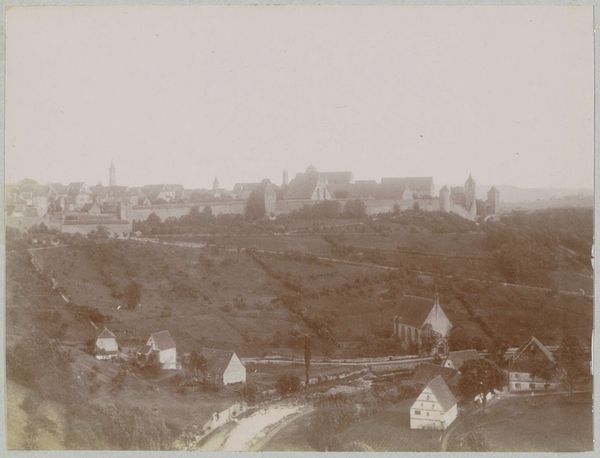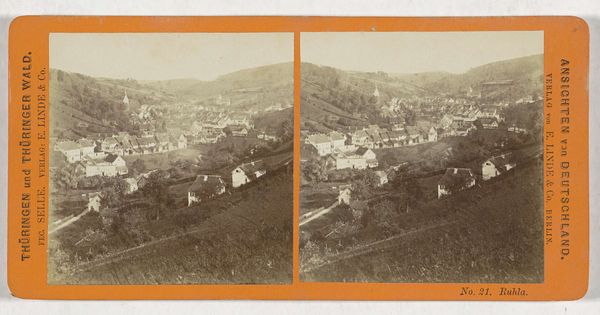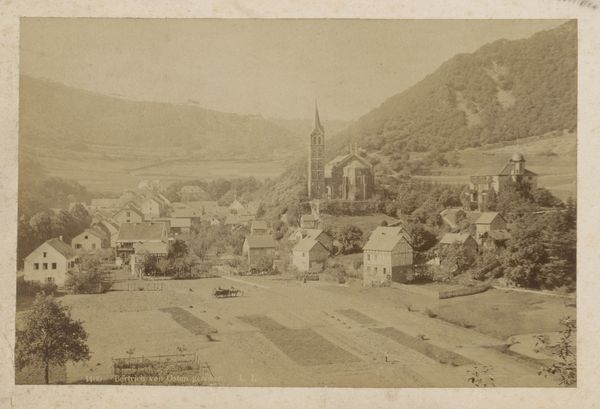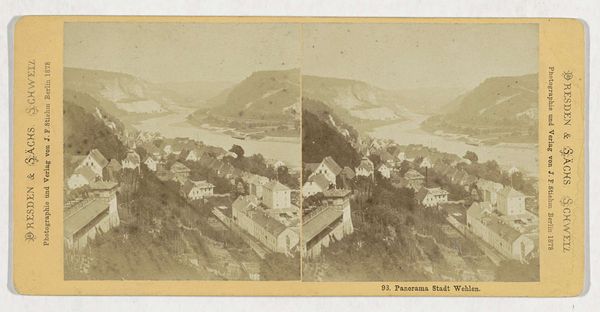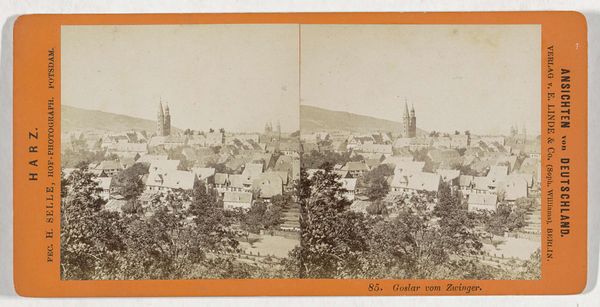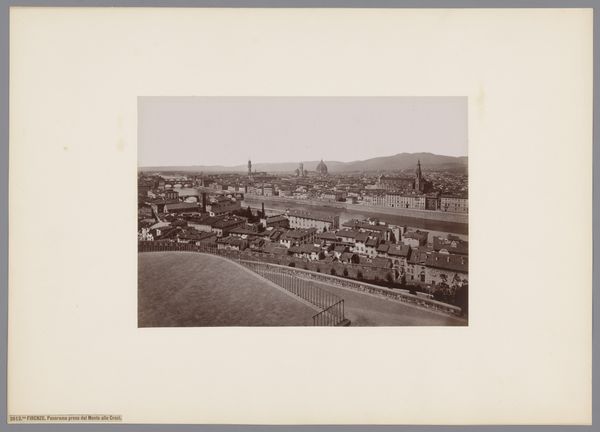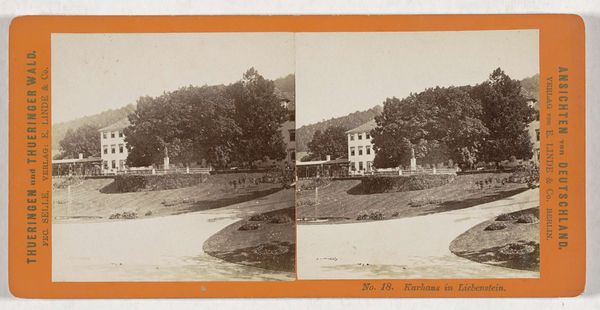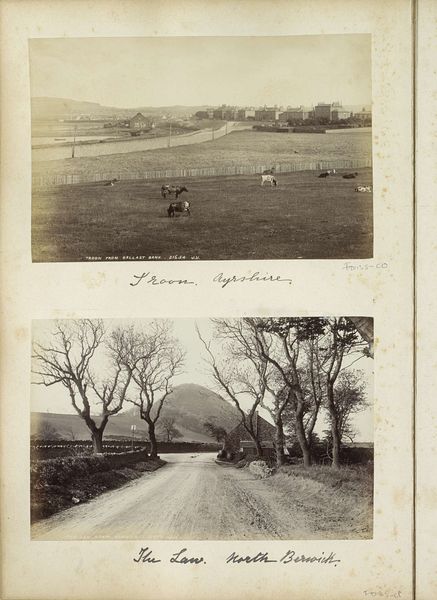
photography, gelatin-silver-print
#
landscape
#
photography
#
gelatin-silver-print
#
cityscape
#
realism
Dimensions: height 86 mm, width 175 mm
Copyright: Rijks Museum: Open Domain
Curator: This gelatin silver print, dating from 1869 to 1872, offers us a "View of Bad Schwalbach" by Johann Friedrich Stiehm. Editor: The first thing that strikes me is how still and contemplative it feels. The tones are soft and uniform. Curator: That's an interesting reading of Stiehm's work here. Note the strategic use of light and shadow; the sunlight emphasizes the geometric clarity of each house. What do you make of the composition itself? Editor: I see a carefully constructed perspective that presents Bad Schwalbach as an orderly and picturesque village, reflecting a particular kind of bourgeois idyll typical of the period. One that favors control. Curator: Indeed. And that speaks to the photographic conventions of the time. It seems so technically proficient, we almost ignore how the repeated patterns of houses build a rhythmic structure across the image plane. This repetition almost lends it an air of artificiality. Editor: Absolutely. It projects an image of societal stability and prosperity and reflects the ambitions of burgeoning middle classes seeking an idealized version of community. Notice too, that despite its claims to "realism," the photographic angle is decidedly curated and removed from daily life. The vantage is clearly separate. Curator: But Stiehm’s manipulation reveals his mastery of form, and by extension, reveals our latent tendency to project ideals onto reality. It is the light that lends depth and gives form to the photograph. Editor: It also perhaps hides reality—selectively presenting us with this seemingly undisturbed landscape, potentially obscuring socio-economic realities. The very act of viewing through this "still" image enforces a selective process in the shaping of the contemporary perspective. Curator: It really gives us pause. And by reducing the social or cultural world to mere formal properties, our understanding remains critically and intellectually grounded within a different set of parameters. Editor: Agreed. Considering its historical reception, it is interesting to understand how the image became associated with power. This image encapsulates the complex layers of art and its sociopolitical impact.
Comments
No comments
Be the first to comment and join the conversation on the ultimate creative platform.
